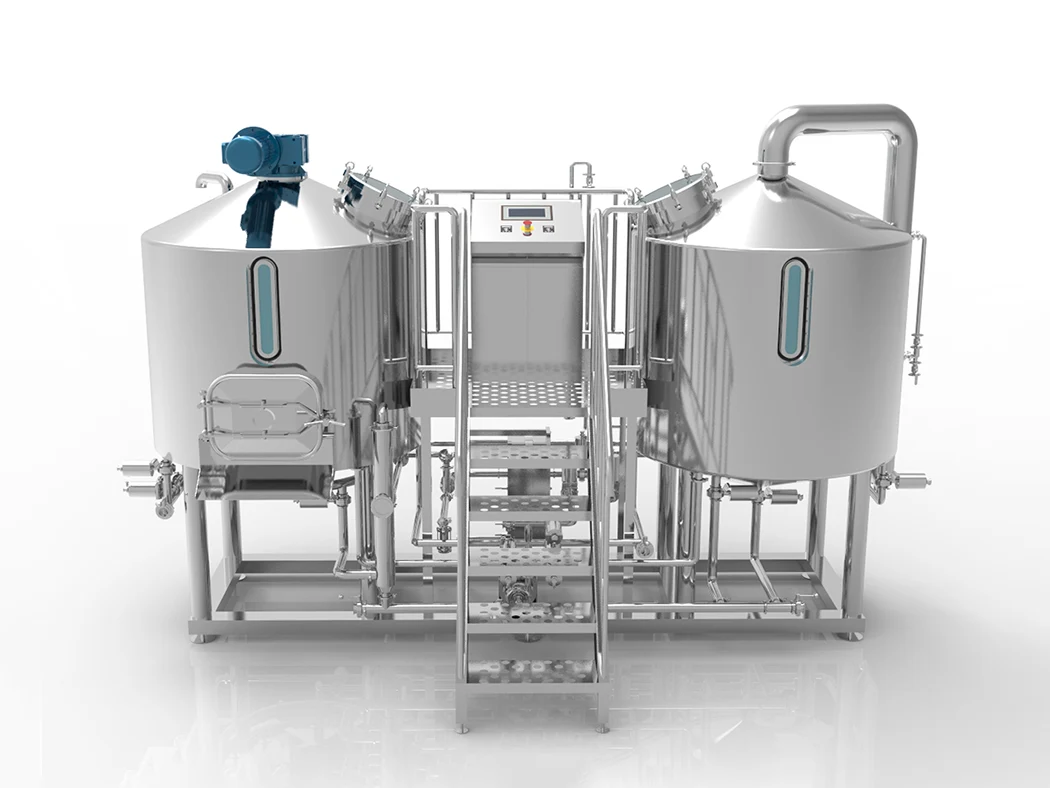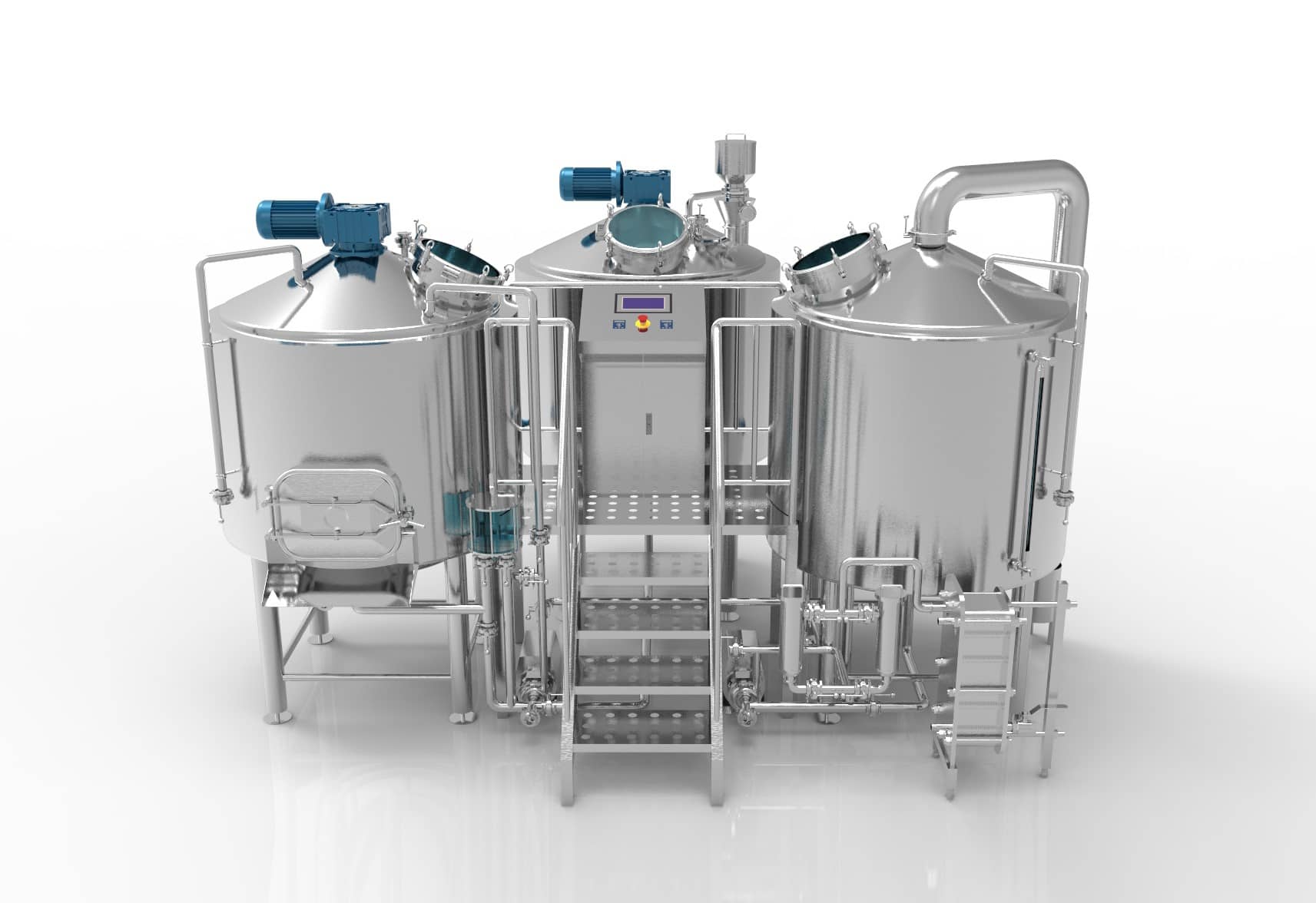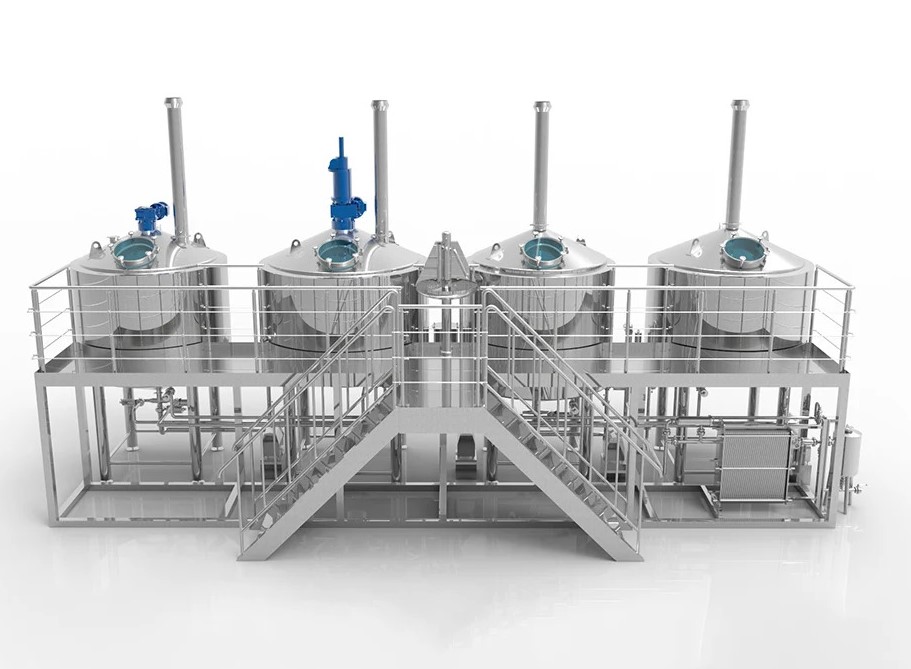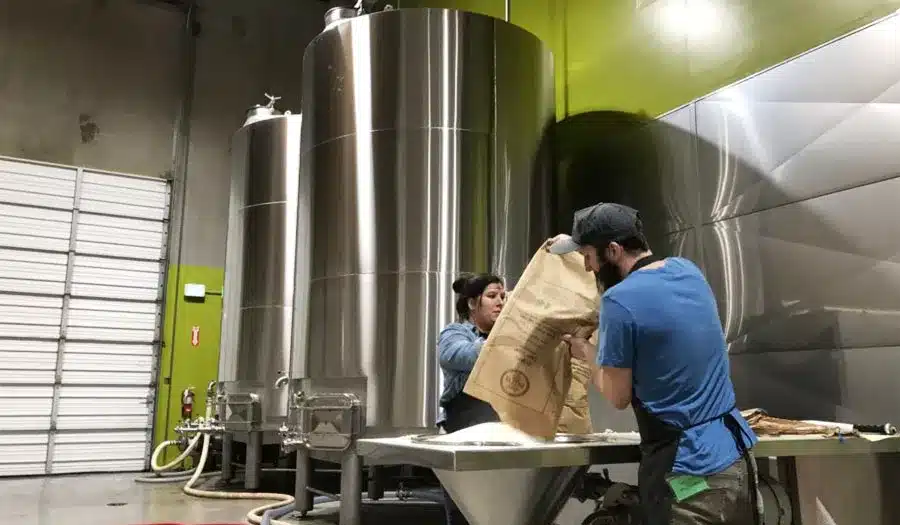La kombucha es una de las bebidas más comunes en el mercado de las bebidas modernas. La kombucha no sólo responde a la búsqueda de una vida sana de la gente moderna, sino que también ofrece una gran variedad de sabores. En respuesta a la creciente demanda de kombucha, las cervecerías de kombucha se han convertido en una opción popular tanto para principiantes como para cerveceros. Desde el desarrollo de un plan de negocio y la obtención de financiación hasta el abastecimiento de ingredientes orgánicos y la puesta en marcha de una fábrica de cerveza, esta lista de comprobación le guiará a través de todos los pasos necesarios para montar su propio negocio de elaboración de cerveza de kombucha.
¿Qué es una fábrica de Kombucha?
Kombucha es una bebida de té fermentado, fermentado a partir de hojas de té, azúcar, y un tejido vivo llamado "cepa" (COBY, bacterias de bio-cultivo barato, y la levadura). Su sabor único, sus ricas bacterias nutritivas y sus beneficios para la salud son cada vez más populares entre los consumidores. Kombucha Brewery no es sólo una planta de producción, sino también una empresa que incorpora la ciencia de los alimentos, la estrategia de mercado y la innovación. A medida que crece el mercado de las bebidas saludables, aumenta también la popularidad de la kombucha. Kombucha Brewery es una fábrica especializada en la producción de kombucha.
Entre las principales funciones y características se incluyen:
- Proceso de producción: El proceso económico de la kombucha incluye pasos como la selección del material, la mezcla, la fermentación, la filtración y el embotellado. Las fábricas de cerveza deben estar equipadas con ciertos equipos, como tanques de fermentación, sistemas de filtración y máquinas de llenado, para garantizar la producción de kombucha de alta calidad.
- Producción química a gran escala: Con las diferencias de la elaboración casera, las fábricas de kombucha pueden lograr una producción a gran escala para satisfacer la demanda del mercado. Las fábricas de bebidas pueden producir una cantidad de productos y ofrecer una gran variedad de sabores y variedades de kombucha.
- Control de calidad: La fábrica de cerveza establece un estricto sistema de control de calidad para garantizar que el contenido, la acidez y la biomasa microbiana de cada lote de productos cumplen las normas. Proyectos de salud del consumidor.
- Canales de mercado: Las fábricas de kombucha pueden vender sus productos a través de diversos canales, como supermercados, tiendas de dietética, restaurantes y plataformas en línea. Además, la cooperación y la distribución también son vías importantes para ampliar el mercado.
- Innovación e I+D: Para atraer a los consumidores, las cerveceras de Kombucha suelen innovar los productos y desarrollar diferentes sabores y preferencias gustativas.

Realizar estudios de mercado
Las cervecerías de kombucha deben realizar estudios de mercado para comprender mejor la demanda, la competencia y las oportunidades del sector de la kombucha. Debe recopilar y analizar datos como los datos demográficos de los consumidores, las tendencias del mercado y la cuota de mercado para orientar sus decisiones y estrategias empresariales. Esta investigación puede ayudarle a comprender las oportunidades y los retos a los que puede enfrentarse y a orientar las decisiones sobre fórmulas, marcas y mercados objetivo.
- Defina sus objetivos de investigación
- Desarrollar un plan de investigación
- dentifique su mercado objetivo
- Realizar investigaciones primarias
- Realizar investigaciones secundarias
- Recopilar datos de mercado
- Analizar e interpretar datos y conclusiones
- Analizar las tendencias del mercado
- Evaluar las oportunidades de mercado
- Evaluar los cambios del mercado
Desarrollar un plan de negocio.
Antes de abrir una fábrica de kombucha, primero hay que aclarar el modelo de negocio. Puede elegir entre los siguientes modelos:
- Autoelaboración y autoventa: elabore usted mismo las infusiones de kombucha y véndalas directamente a los consumidores.
- Producción cooperativa: cooperar con bares y restaurantes locales para ofrecer productos personalizados.
- Ventas en línea: vender a través de plataformas de comercio electrónico para ampliar el mercado.
Un plan de empresa detallado puede proporcionar una dirección clara para su negocio. Una vez que tenga un conocimiento preliminar del mercado, puede empezar a redactar un plan de negocio. El plan de negocio le proporcionará una hoja de ruta clara para el desarrollo de su fábrica de kombucha.
A continuación se expone la estructura básica de un plan de empresa:
- Resumen ejecutivo: presente brevemente el concepto y los objetivos de la empresa.
- Análisis del mercado: analizar el mercado objetivo, los competidores y las necesidades de los consumidores.
- Estrategia de marketing: formular el precio del producto, la promoción, los canales de venta y otras estrategias.
- Plan de explotación: aclarar los procesos de producción, la dotación de personal y la gestión de la cadena de suministro.
- Previsión financiera: formular presupuesto de inversión inicial, ingresos de explotación y análisis de costes, etc.
Ubicación de la fábrica de Kombucha
Uno de los pasos clave para poner en marcha una cervecería de kombucha dura es encontrar la ubicación adecuada para su cervecería y bar. La ubicación que elija no sólo debe cumplir con las leyes de zonificación, sino que también debe ser conveniente para su mercado objetivo para llegar. Antes de decidirse por una ubicación, compruebe siempre las leyes locales de zonificación para asegurarse de que puede operar una fábrica de cerveza en ese lugar en particular. Elija un lugar de fácil acceso para su mercado objetivo. Tenga en cuenta factores como la accesibilidad al transporte público, la disponibilidad de plazas de aparcamiento y la comodidad general para los clientes. Evalúe las necesidades de espacio para la producción, el almacenamiento y la venta directa. Asegúrese de que el local tiene espacio suficiente para albergar equipos de elaboración de cerveza, tanques de fermentación, almacenamiento de materias primas, materiales de envasado y una sala de degustación para que los clientes prueben y compren el producto. Cada zona puede tener una normativa diferente para la instalación de negocios relacionados con el alcohol. Además, el espacio debe ser adecuado para la producción, el almacenamiento y la venta directa, a fin de garantizar un funcionamiento sin problemas.
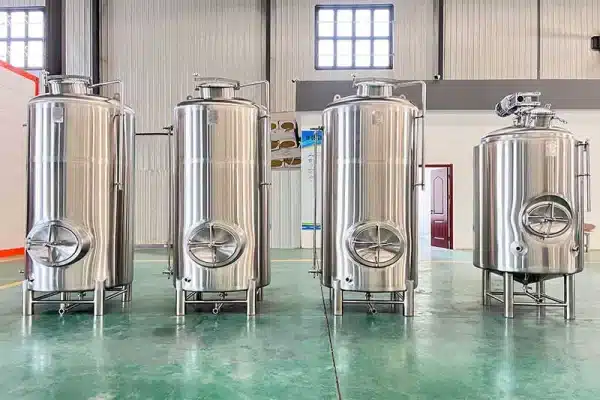
Equipo de elaboración de Kombucha
La elaboración de kombucha requiere equipos y materiales específicos, lo que puede suponer un gasto importante a la hora de poner en marcha una fábrica de kombucha. Los costes variarán en función de la escala de las operaciones, el grado de automatización y la calidad de los materiales. Estos equipos y herramientas ayudan a garantizar que el proceso de fermentación de la kombucha se desarrolle sin problemas y que la kombucha final tenga un sabor y un aroma excelentes.
- Tanques de fermentación: Suelen ser depósitos de acero inoxidable de calidad alimentaria que pueden contener de decenas a miles de litros de líquido. Estos depósitos están diseñados para mantener un entorno de fermentación estable y suelen estar equipados con sistemas de control de la temperatura y dispositivos de agitación.
- Sistemas de calefacción y refrigeración: Se utilizan para mantener los tanques de fermentación dentro del rango de temperatura óptimo para garantizar la estabilidad del proceso de fermentación. Puede incluir termostatos, dispositivos de refrigeración y dispositivos de calefacción.
- Sistema de filtración: Se utiliza para eliminar las impurezas sólidas y la biopelícula residual del líquido de fermentación. Incluye filtros de malla fina, separadores centrífugos, etc.
- Dispositivo agitador: Se utiliza para mezclar uniformemente el líquido en el tanque de fermentación, lo que ayuda a controlar el proceso de fermentación y mejorar la consistencia del producto.
- Equipos de envasado: Las embotelladoras son equipos de embotellado automatizados que se utilizan para transferir el kombucha a las botellas y sellarlas. La máquina etiquetadora se utiliza para etiquetar las botellas, incluyendo información sobre la marca, descripción de los ingredientes, fecha de producción, etc.
- Equipos de limpieza y esterilización: utilizados para limpiar y esterilizar equipos como tanques de fermentación y botellas que entran en contacto con líquidos para garantizar la higiene y seguridad de los productos. Incluye máquinas de limpieza por vapor a alta temperatura, equipos de limpieza química, etc.
- SCOBY: La flora de fermentación de la kombucha, es decir, el "cultivo simbiótico de bacterias y levaduras", es la clave del proceso de fermentación.
¿Cuánto cuesta el equipo para elaborar Kombucha?
La instalación de una cocina comercial de última generación es un primer paso fundamental para cualquier empresa de producción de kombucha. Estos equipos y suministros especializados pueden suponer una parte significativa de los costes de puesta en marcha, que suelen oscilar entre $50.000 y $150.000 o más, dependiendo del tamaño de la operación.
- Tanques de cocción y fermentación de acero inoxidable de gran capacidad, que cuestan entre $5.000 y $20.000 cada uno.
- Los pasteurizadores, sistemas de filtración y otros equipos de procesado para garantizar una calidad constante del producto cuestan entre 1.000 y 1.500 millones de euros.
- Equipo de refrigeración de calidad comercial y espacio de almacenamiento con temperatura controlada para mantener unas condiciones óptimas de fermentación, entre $15.000 y $30.000.
- Encimeras de acero inoxidable, fregaderos y otras superficies de uso alimentario para preparación y limpieza, entre $5.000 y $15.000.
- Máquinas de embotellado, taponado y etiquetado para agilizar el proceso de envasado, de $20.000 a $50.000.
Cuando elabore un presupuesto, realice un cálculo de costes detallado basado en sus necesidades específicas y las condiciones del mercado. También puede consultar a los proveedores locales de equipos y las condiciones del mercado y hacer los ajustes necesarios. Espero que esta información le ayude a planificar mejor la apertura de su fábrica de kombucha.
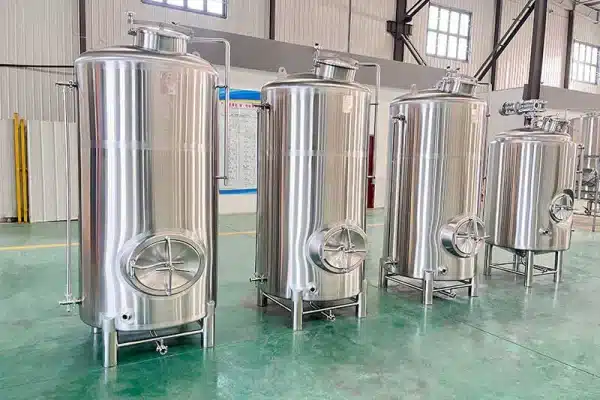
PREGUNTAS FRECUENTES
¿Cuál es la inversión inicial para poner en marcha una fábrica de kombucha?
La inversión inicial puede oscilar entre unos cientos de miles de dólares y varios millones de dólares, en función del tamaño de la planta, la configuración de los equipos, el grado de automatización, la ubicación geográfica, el posicionamiento en el mercado y otros factores.
- Planta pequeña (pequeño número de equipos, bajo grado de automatización): entre $100.000 y $500.000.
- Planta de tamaño medio (equipos de tamaño medio, automatización parcial): entre $500.000 y $1,5 millones.
- Planta grande (equipo totalmente automático, producción a gran escala): puede superar los $1,5 millones.
¿Cuál es el coste de las materias primas?
- Té: entre $20 y $100 por kilo, según el tipo de té.
- Azúcar: alrededor de $1 a $3 por kilogramo.
- SCOBY: El precio de compra inicial puede ser de $100 a $500, tras lo cual puede reproducirse por sí sola.
¿Cómo elegir un recipiente de fermentación adecuado?
Elija materiales resistentes a la corrosión, como el vidrio o la cerámica, y evite los recipientes metálicos. La capacidad debe seleccionarse en función de la escala de producción, y son habituales los depósitos de fermentación de 50 litros a 1.000 litros.
¿Cómo controlar la temperatura de fermentación?
La temperatura de fermentación ideal para la kombucha oscila entre 20 y 30 °C. La temperatura puede controlarse con un termostato y, si es necesario, puede colocarse una almohadilla térmica alrededor del recipiente de fermentación o una manta térmica si se encuentra en una zona más fría.
¿Cuánto tiempo tarda en fermentar antes de estar listo para beber?
La primera fermentación suele durar entre 7 y 14 días, dependiendo de la temperatura ambiente y del gusto personal. La segunda fermentación (si se necesitan ingredientes saborizantes) puede durar otros 2-7 días.

